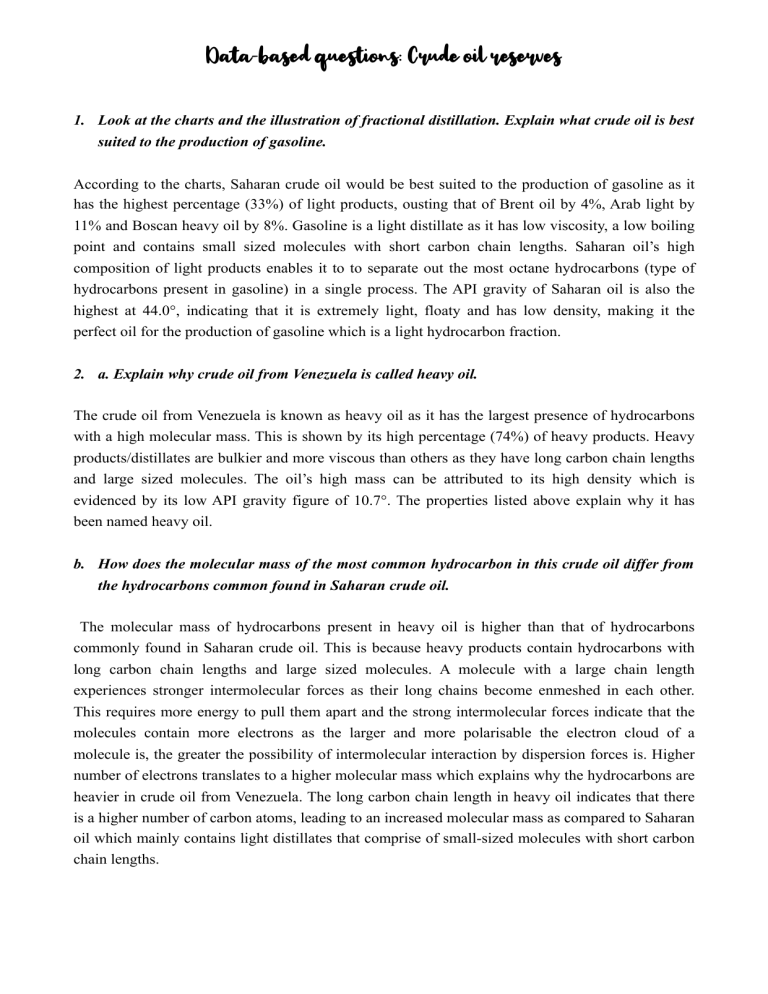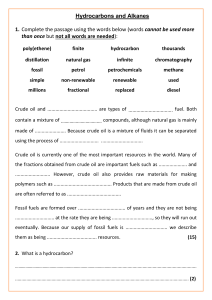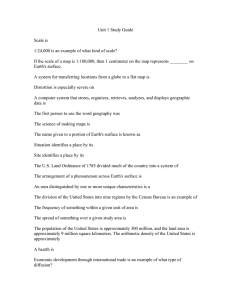
Data-based questions: Crude oil reserves 1. Look at the charts and the illustration of fractional distillation. Explain what crude oil is best suited to the production of gasoline. According to the charts, Saharan crude oil would be best suited to the production of gasoline as it has the highest percentage (33%) of light products, ousting that of Brent oil by 4%, Arab light by 11% and Boscan heavy oil by 8%. Gasoline is a light distillate as it has low viscosity, a low boiling point and contains small sized molecules with short carbon chain lengths. Saharan oil’s high composition of light products enables it to to separate out the most octane hydrocarbons (type of hydrocarbons present in gasoline) in a single process. The API gravity of Saharan oil is also the highest at 44.0°, indicating that it is extremely light, floaty and has low density, making it the perfect oil for the production of gasoline which is a light hydrocarbon fraction. 2. a. Explain why crude oil from Venezuela is called heavy oil. The crude oil from Venezuela is known as heavy oil as it has the largest presence of hydrocarbons with a high molecular mass. This is shown by its high percentage (74%) of heavy products. Heavy products/distillates are bulkier and more viscous than others as they have long carbon chain lengths and large sized molecules. The oil’s high mass can be attributed to its high density which is evidenced by its low API gravity figure of 10.7°. The properties listed above explain why it has been named heavy oil. b. How does the molecular mass of the most common hydrocarbon in this crude oil differ from the hydrocarbons common found in Saharan crude oil. The molecular mass of hydrocarbons present in heavy oil is higher than that of hydrocarbons commonly found in Saharan crude oil. This is because heavy products contain hydrocarbons with long carbon chain lengths and large sized molecules. A molecule with a large chain length experiences stronger intermolecular forces as their long chains become enmeshed in each other. This requires more energy to pull them apart and the strong intermolecular forces indicate that the molecules contain more electrons as the larger and more polarisable the electron cloud of a molecule is, the greater the possibility of intermolecular interaction by dispersion forces is. Higher number of electrons translates to a higher molecular mass which explains why the hydrocarbons are heavier in crude oil from Venezuela. The long carbon chain length in heavy oil indicates that there is a higher number of carbon atoms, leading to an increased molecular mass as compared to Saharan oil which mainly contains light distillates that comprise of small-sized molecules with short carbon chain lengths. Data-based questions: Crude oil reserves 3. The terms sweet crude oil and sour crude oil refer to the sulphur content of the crude oil. Crude oil with less than 0.5% Sulfur content is classified as sweet. Which crudes on this graph are considered sweet oil. Saharan oil comprises of 0.2% Sulfur and Brent oil contains 0.3% Sulfur. Therefore they qualify as sweet oil as as their percentages of Sulfur content are lower than 0.5% . 4. a. Sulfur is corrosive. Suggest reasons why sweet oil is easier to refine and is preferred by refineries? From the information given, sweet oil has lower Sulfur content than crude oil, which means it is less corrosive. Therefore, sweet oil is preferred by refineries as it does not reduce the efficiency of the refining process due to its corrosive tendencies. Corrosion can lead to equipment failure, degradation of steel-based products, causing refineries extra costs due to maintenance of its implements. Crude oil can also pose serious safety hazards and health problems due to its high quantities of hydrogen sulfide, whereas sweet oil is less toxic, and safer to extract, making it a more desirable product for refineries. b. Why does sweet oil command a higher price per barrel? One of the reasons sweet oil commands higher pricing is because it undergoes less processing and refining, making it more valuable to refineries. As per the graph, Saharan and Brent, the oils that qualify as sweet, both have a majority of light products. Saharan leads with 33% light products and Brent ranks second with 29%. This means that it produces a higher percentage of gasoline and diesel fuel when converted into products by an oil refinery. These products are of high-end value, a huge demand in the transportation sector and an everyday essential for anyone owning a land vehicle, which leads to increased pricing of sweet oil.






